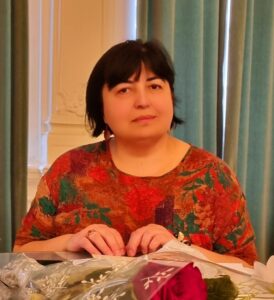Three “visiting cards" of Tbilisi
The 3 iconic landmarks of Tbilisi, the Opera and Ballet Theater of Tbilisi, the National Palace, and Mtatsminda Pantheon, distinguish themselves as exceptional places, evoking pride in the city. These landmarks are situated along Rustaveli, the oldest main avenue
The Opera Theater, having faced two fires, continues to captivate with its unique architecture. Similarly, the National Palace, with its history dating back to 1802, adds to the cultural richness of Rustaveli. The panoramic view from Mtatsminda, visible from all parts of the city, encompasses Rustaveli Avenue at the foot of the mountain.
Following our itinerary, Rustaveli Prospect takes center stage, featuring two noteworthy views: the expanse around Kashueti Cathedral, the Parliament building, and the Museum of Georgian Art. This locale holds historical significance, having witnessed pivotal events in the country’s history. Rustaveli Theater, positioned near the Opera House, offers a view of the Biltmore Hotel.
However, the most impressive view is from Mtatsminda Pantheon, showcasing the entirety of Tbilisi, including the old and new parts, Mtkvari River, Trinity Cathedral, House of Justice, President’s Palace, Baratashvili Bridge, Bridge of Peace, Rike, and other notable landmarks.
What to eat in Tbilisi
Georgian khachapuri cheese bread has earned recognition as one of the best cheese snacks globally. It holds a special place in traditional Georgian cuisine, often being the first choice for foreigners in restaurants. A simple yet iconic dish, khachapuri combines cheese and dough, serving as the quintessential “visiting card” of Georgian culinary heritage. The Megrelian variation, existing for centuries, remains popular in Georgia. The dough is filled with a cheese mixture, and topped with cheese and egg, resulting in a golden crust outside and a soft, flavorful inside. Typically enjoyed at family gatherings and special occasions, khachapuri embodies the essence of Georgian hospitality.
Khinkali, another Georgian classic, is a favorite among foreign guests. Originating from Pshavi, it features 19 folds symbolizing the sun’s rays. The dish, resembling a dough puff, is filled with various ingredients such as meat, cheese, potatoes, or mushrooms. Meaty khinkali is the most common, meant to be eaten with hands, without utensils.
Gozinaki, a traditional Georgian New Year’s treat, combines honey and walnuts, considered sacred foods since ancient times. This cherished tradition, especially prevalent in mountainous regions, makes Gozinaki an essential part of the New Year’s table. Crafted with boiled honey and walnuts, this delightful confection not only satisfies sweet cravings but also provides a boost of energy, enhances immunity, and uplifts the festive mood. A perfect Gozinaki boasts a light color, enticing aroma, and a crumbly texture.
Local customs, tradition and festivities
“Mtatsmindoba” or Saint David’s holiday was observed on the seventh Thursday of Easter. Following the mass, a grand procession commenced, drawing participants from various Christian communities, including Georgians, Poles, Germans, Russians, and more. Both girls and boys, adorned in white attire, joyfully tossed flowers from baskets onto the streets. In Old Tbilisi, the customary “blue tables” were arranged, symbolizing the “Almond holiday” and signifying the arrival of spring.
An ancient Easter tradition involved a competition among the king and princes after the mass, where they vied with each other in archery near Kashueti. The triumphant participant was honored with a gold cup, and the tradition dictated that they skillfully drop the cup.
University Team

Tamar Shaishmelashvili
She is a poet, editor, and holds a Doctor of Philology degree.
Graduating from the faculty of Journalism at Tbilisi Ivane Javakhishvili State University in 1989, she embarked on a journalistic career, contributing to various newspapers and TV programs.
Since 2009, she has served as the editor-in-chief of the literary magazine "Aneuli" and has been a member of the National Union of Georgian writers since 2010. Currently an assistant professor at the Technical University of Georgia, she has published six collections of poems and a monograph titled "The sun... saddened - Levan Gotua." Throughout her career, she has received prestigious awards in literature and journalism, such as the Giorgi Leonidze Prize and the Sergei Meskhi Prize, demonstrating her significant contributions to the literary and journalistic fields.
Manana Kajaia
Temur Jagodnishvili
Great pleasure accompanied our work on the itinerary. Once again, the itinerary of three "visiting cards" of the capital unfolded before our eyes. We viewed all three points with a fresh perspective, rediscovering their territories. Despite old traditions like the competition near Kashueti Cathedral or the big national holiday after the Opera house season opening, where Tbilisi residents celebrated with the Italian troupe, we delved into intriguing facts about the Opera House's architecture, its unique Kobuladze curtain, and one of the world's beautiful and unique chandeliers. Discovering the history of the National Palace on May 26, 1918, when Georgia's independence was proclaimed, added depth to our exploration. Investigating the "Mtatsmindoba" holiday and the "Almond festival" in Tbilisi further enriched our study. This itinerary highlighted the unity and importance of the three selected locations for the capital. The experience proved to be both stimulating and captivating for our lives.
Tamar Shaishmelashvili




